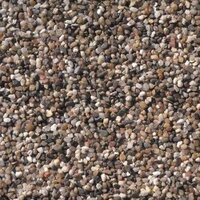Hello,
I am planning to aquascape a 250 liters tank near Christmas.
I want a long term substrate which does not turns to mud and is easy to plant delicate roots such as hemianthus.
My last setup had prodibidio soil, a volcanic soil such as ada and others. I experienced my worst algae issues ever , a filamentous algae who made me give up after hundreds of efforts. It may not has any relation with the substrate but even the idea makes me looking somewhere else.
I am interested in tropica plant growth substrate (not the complete soil but the under gravel layer). It seems that tropica knows well what she suggests for a planted aquarium. About 1 cm of this and cover it with 4cm gravel (1-3mm) above. Whats your opinion about that?
Also, what if you put 1 cm of this substrate and cover it with 3-4 cm of eco-complete which has also a long term usage because of its high rate of absorption? Does this combo works? I found some references about eco-complete that it increases PH. I need a clear answer for this because my fish will need a slightly acid water parameters.
In my country i have tropica, flurite, prodibio,eco-complete, fluval stratum and dennerle substrates.
Thank you for your time
I am planning to aquascape a 250 liters tank near Christmas.
I want a long term substrate which does not turns to mud and is easy to plant delicate roots such as hemianthus.
My last setup had prodibidio soil, a volcanic soil such as ada and others. I experienced my worst algae issues ever , a filamentous algae who made me give up after hundreds of efforts. It may not has any relation with the substrate but even the idea makes me looking somewhere else.
I am interested in tropica plant growth substrate (not the complete soil but the under gravel layer). It seems that tropica knows well what she suggests for a planted aquarium. About 1 cm of this and cover it with 4cm gravel (1-3mm) above. Whats your opinion about that?
Also, what if you put 1 cm of this substrate and cover it with 3-4 cm of eco-complete which has also a long term usage because of its high rate of absorption? Does this combo works? I found some references about eco-complete that it increases PH. I need a clear answer for this because my fish will need a slightly acid water parameters.
In my country i have tropica, flurite, prodibio,eco-complete, fluval stratum and dennerle substrates.
Thank you for your time



